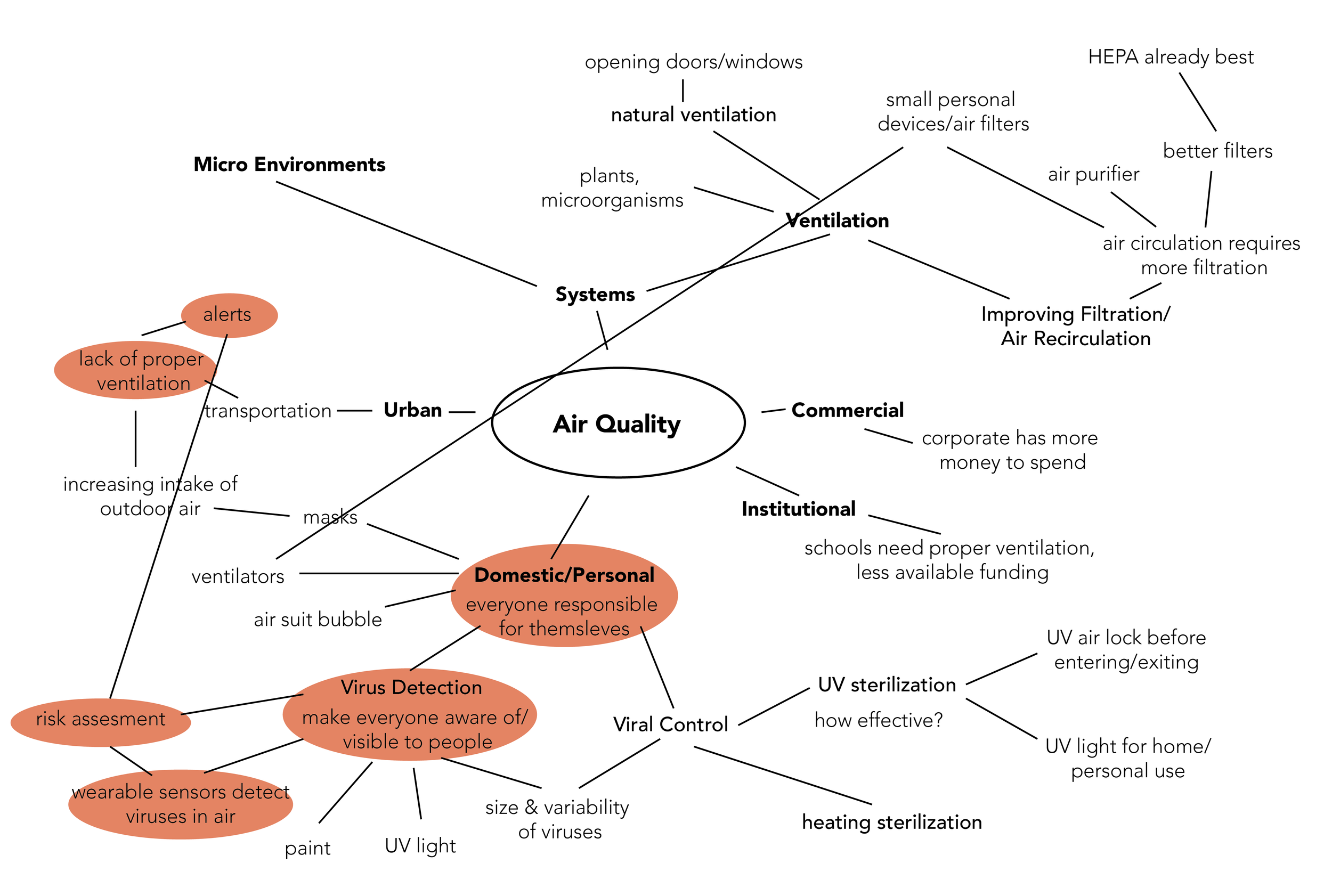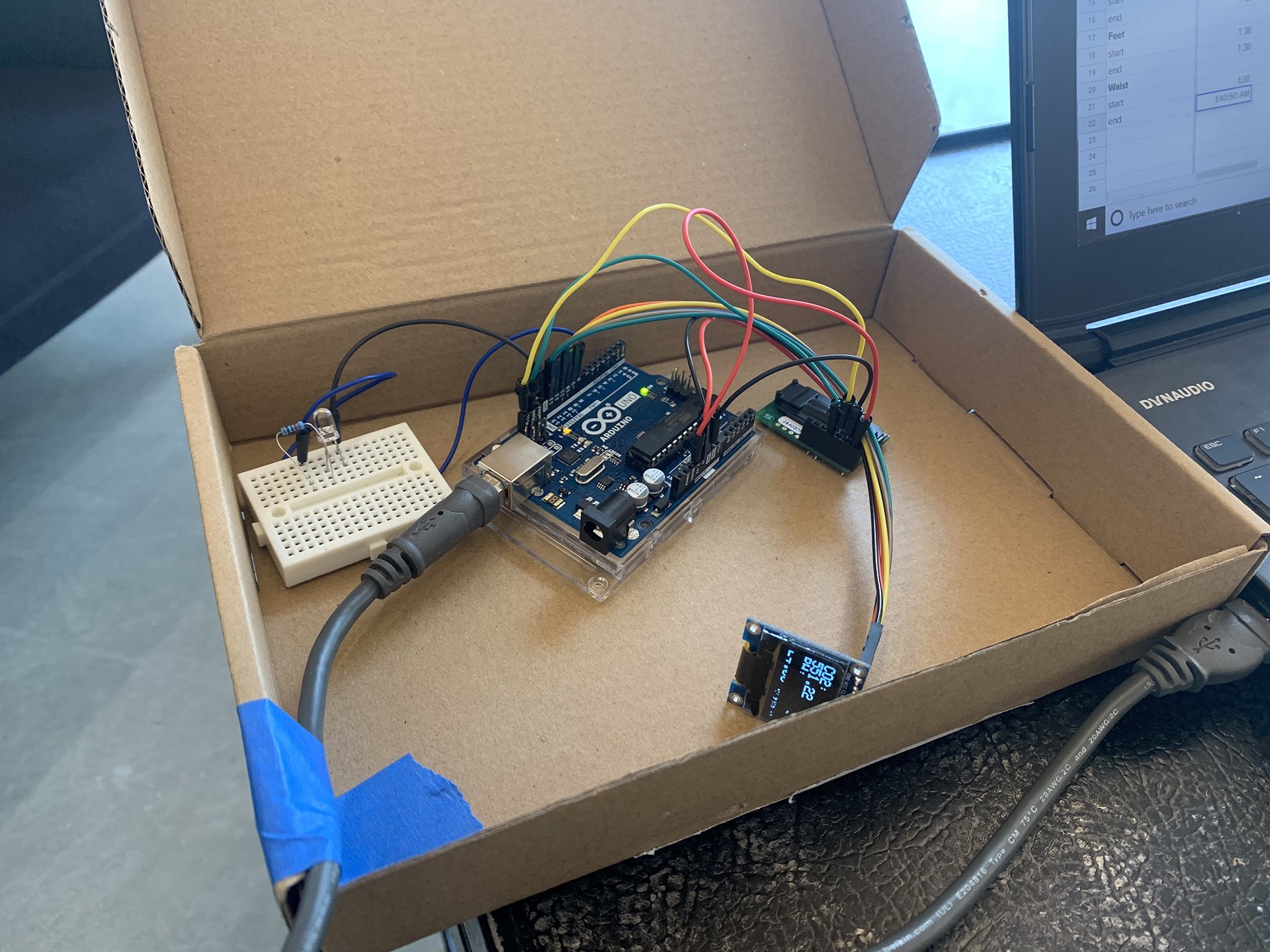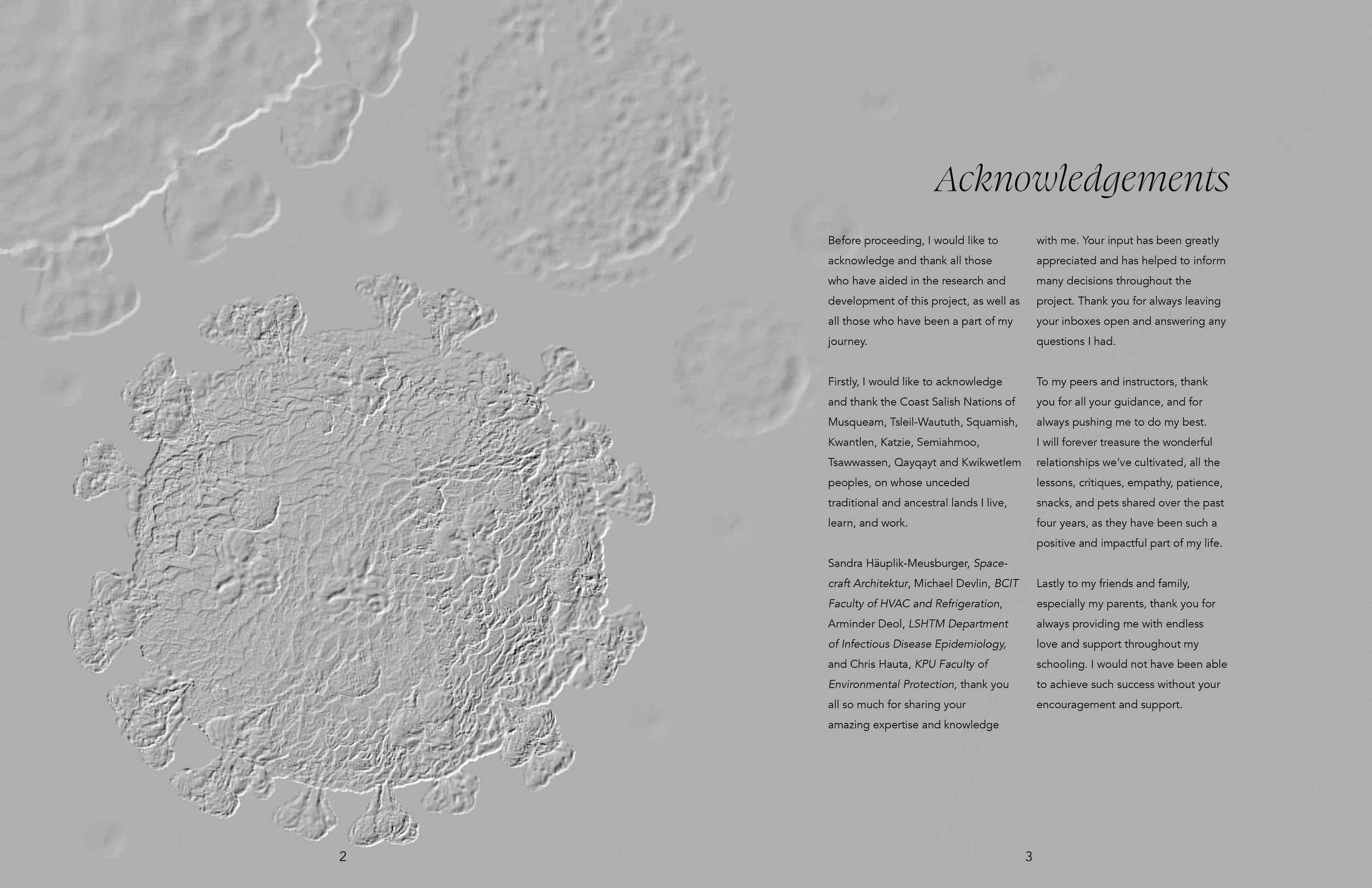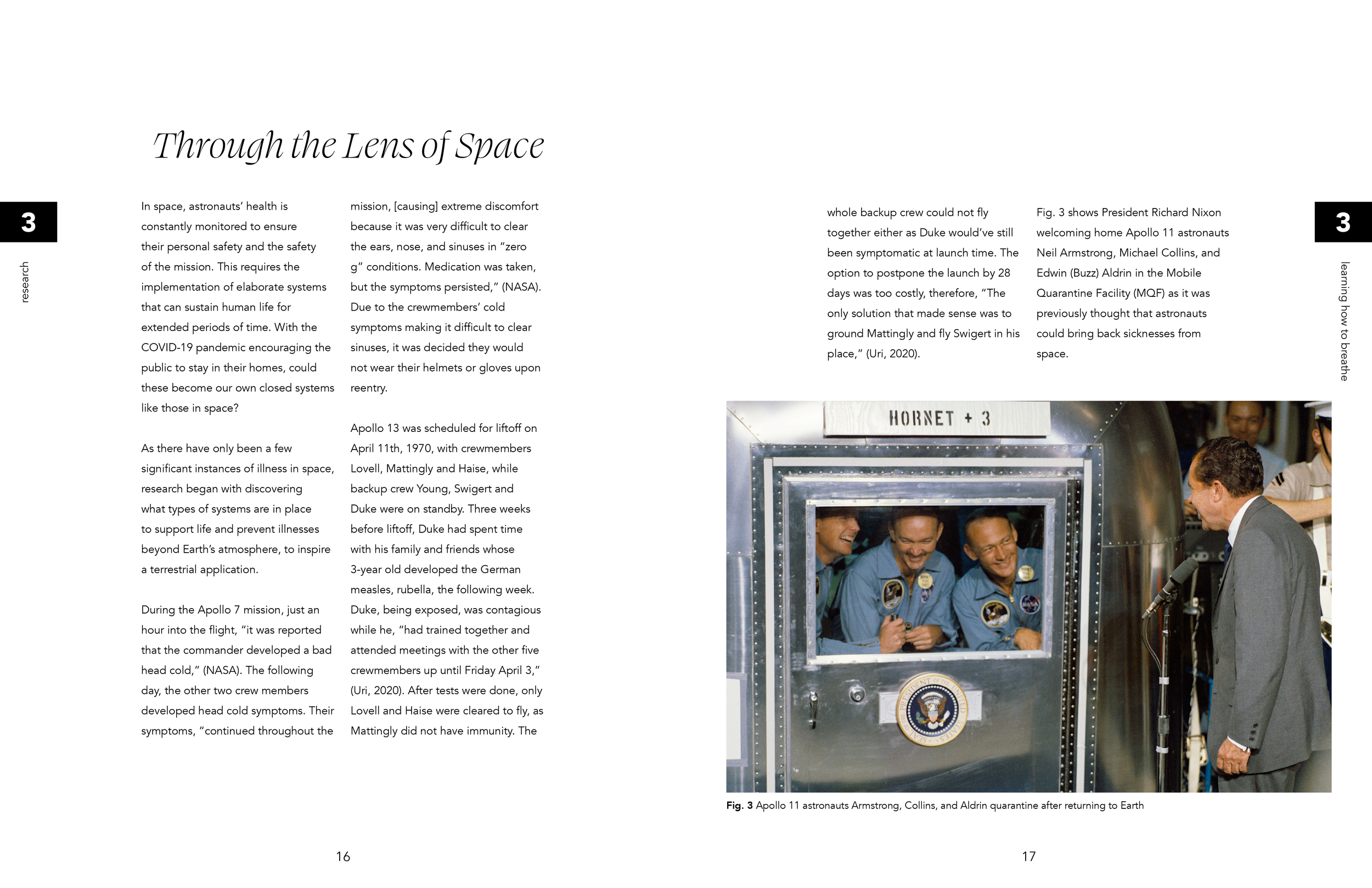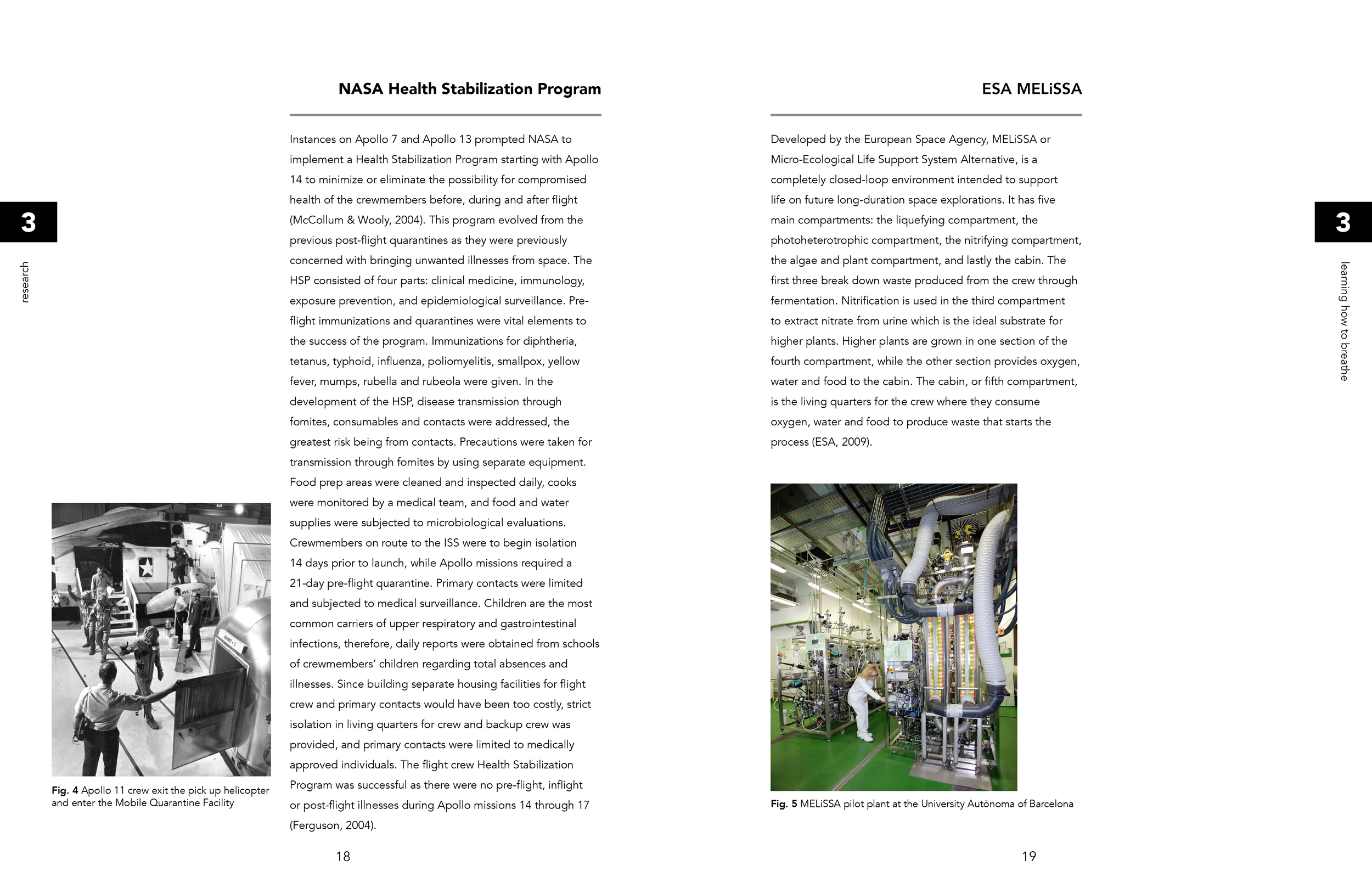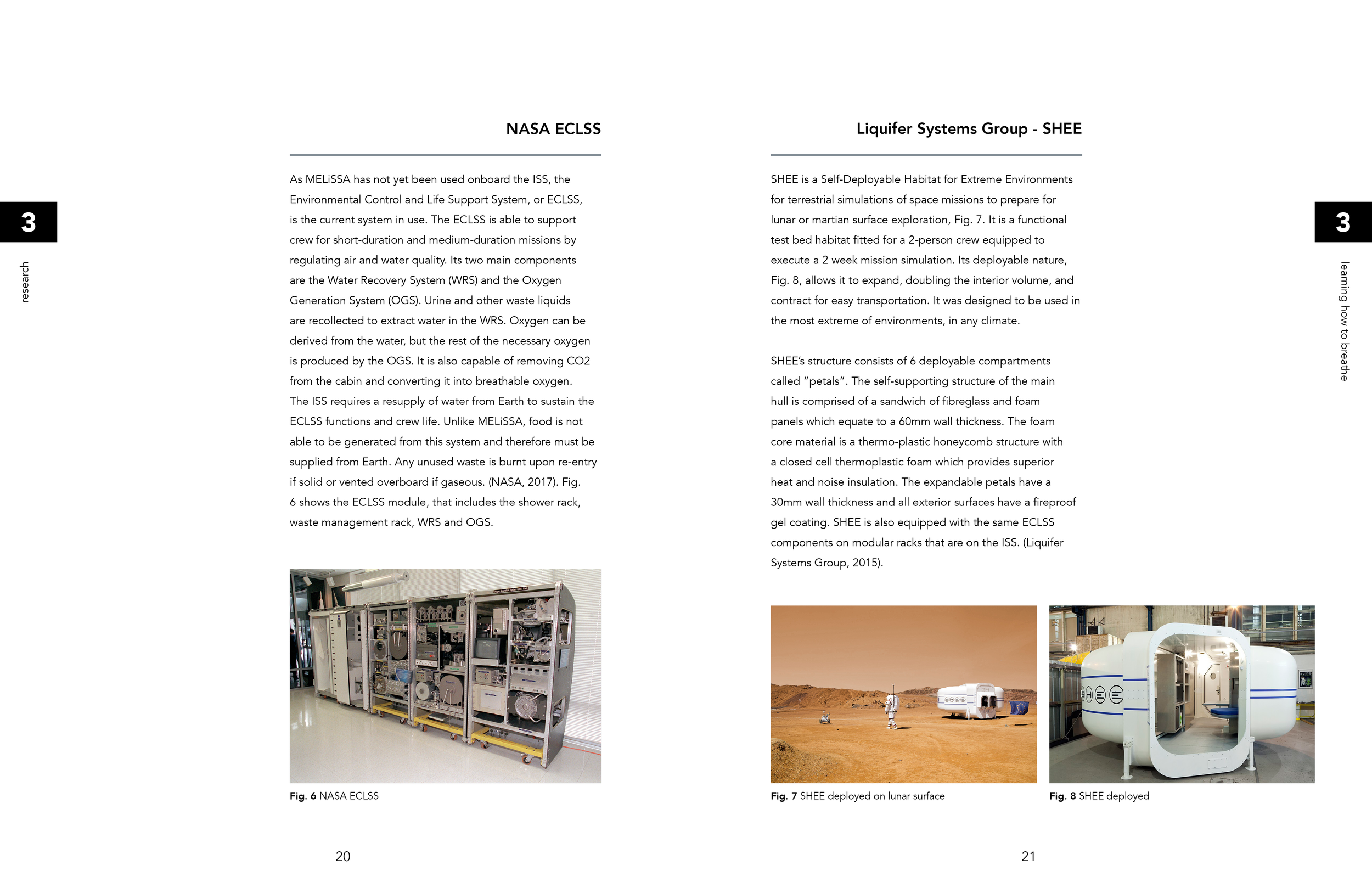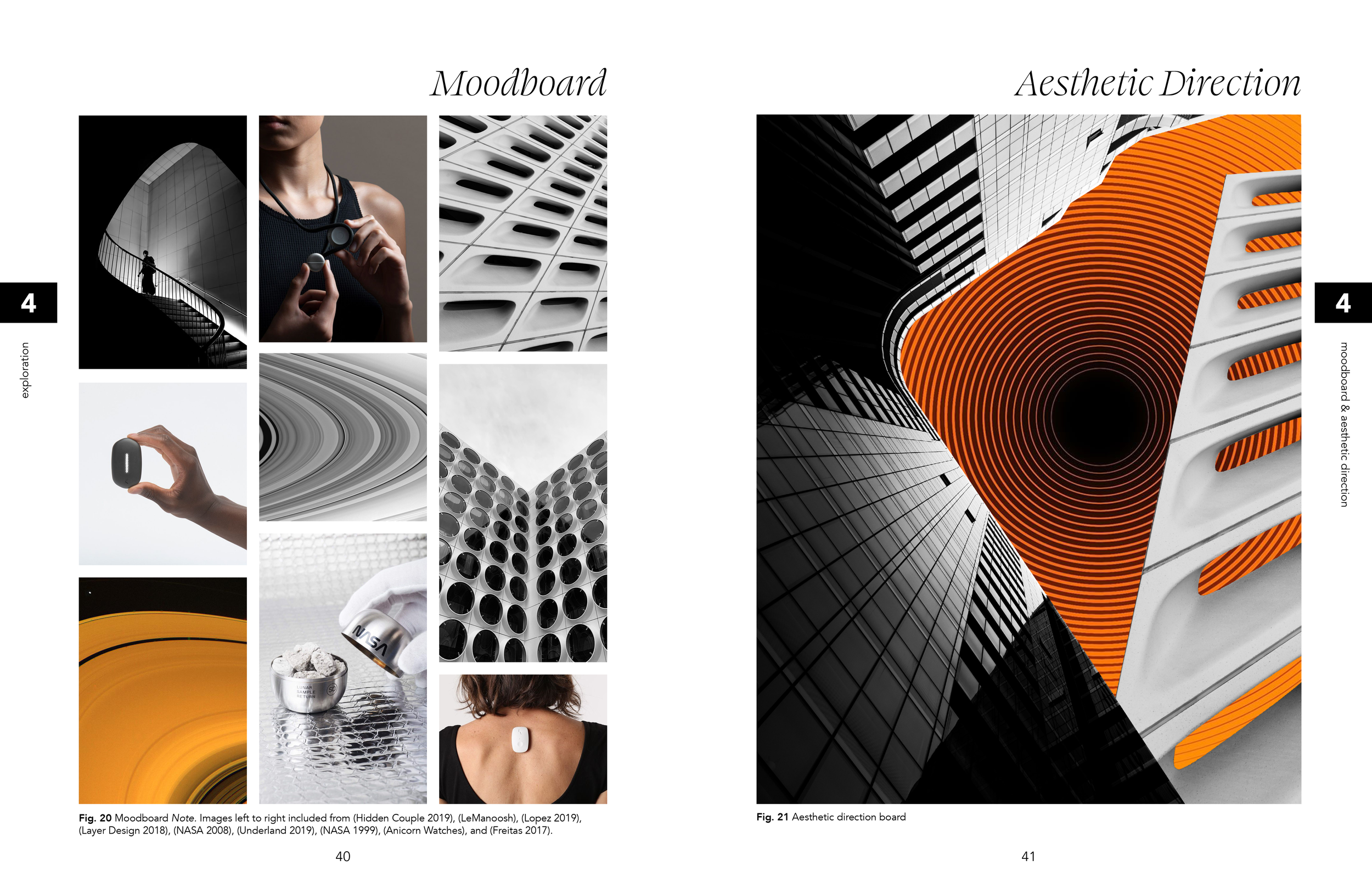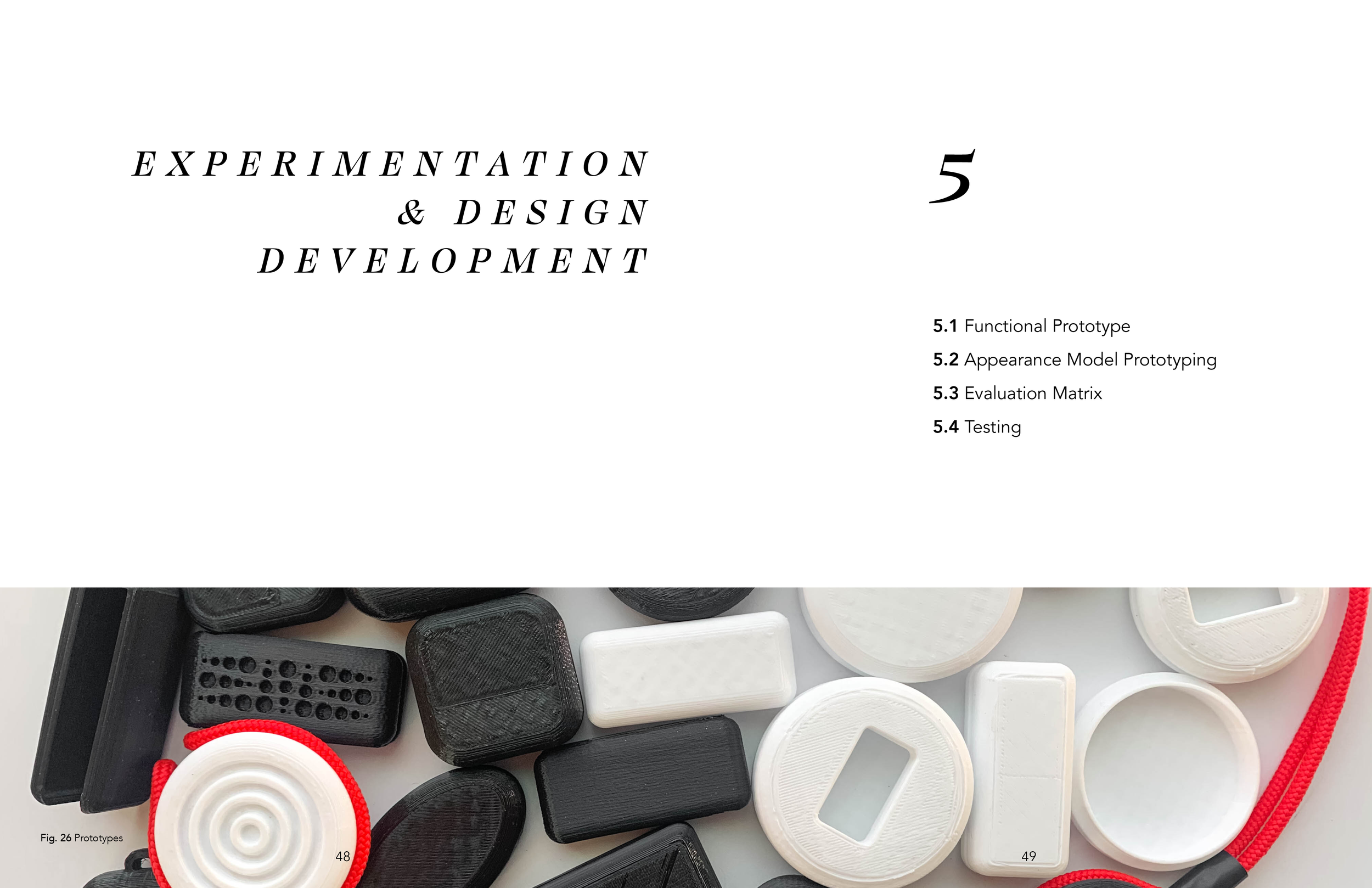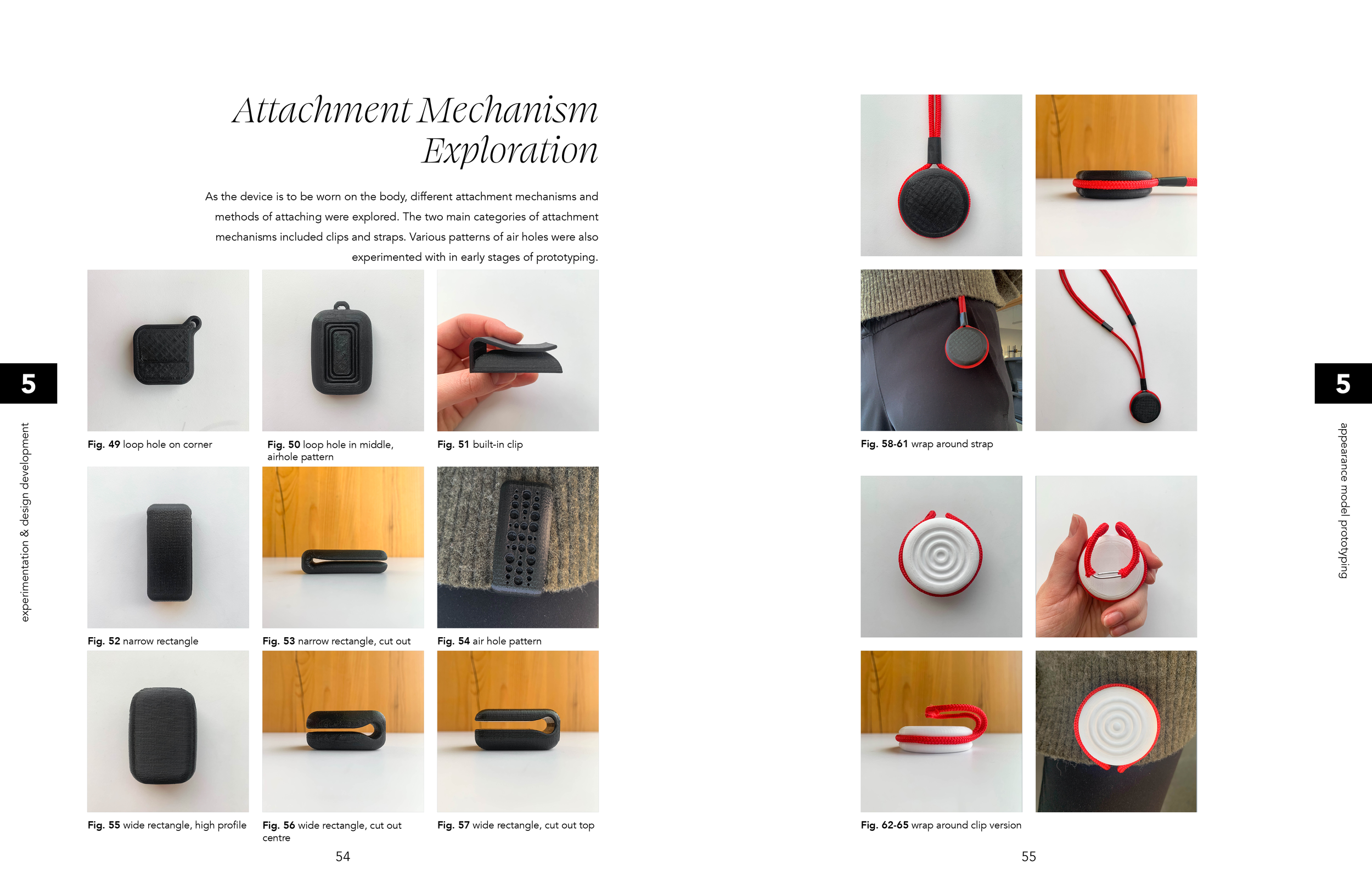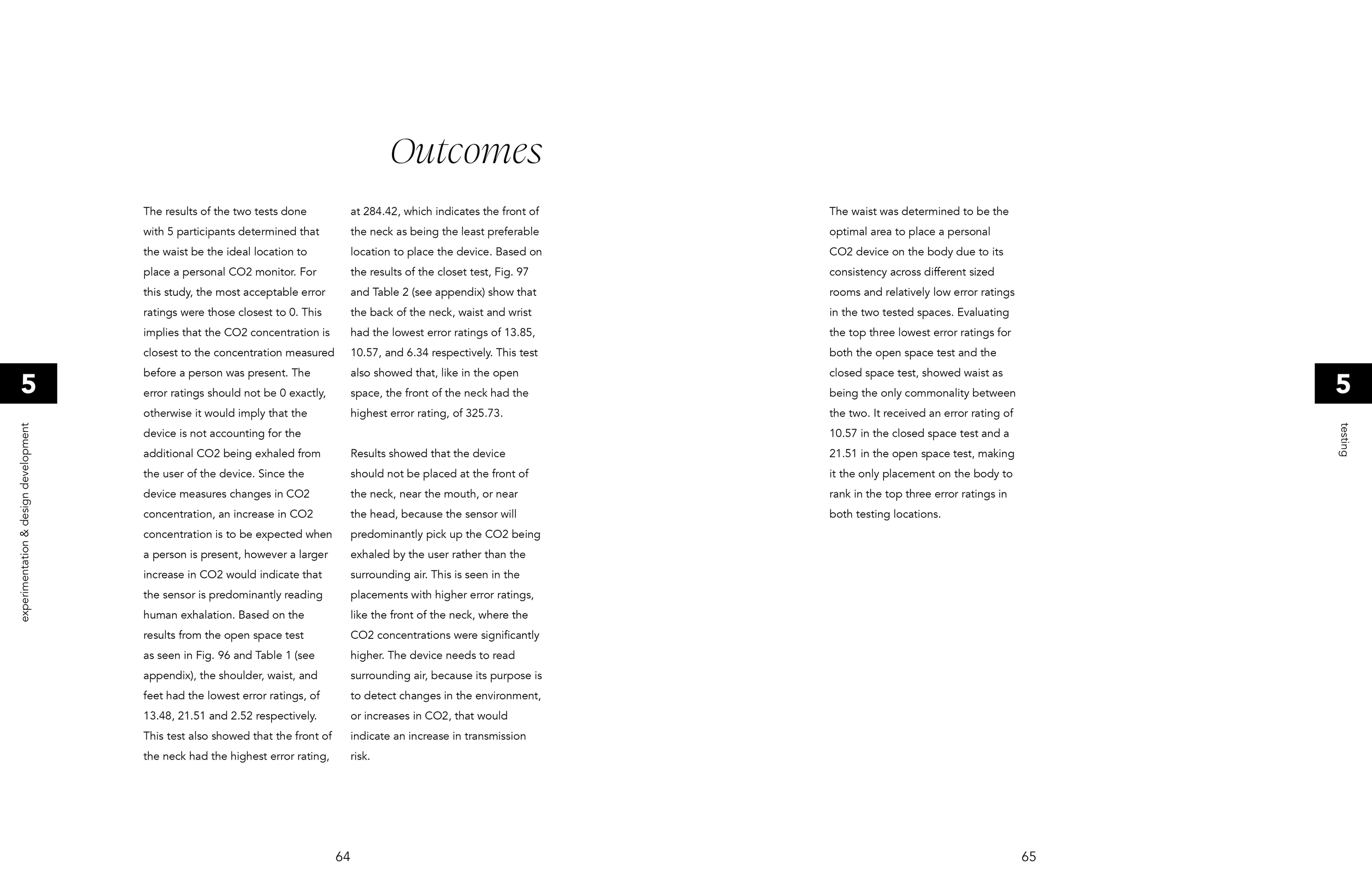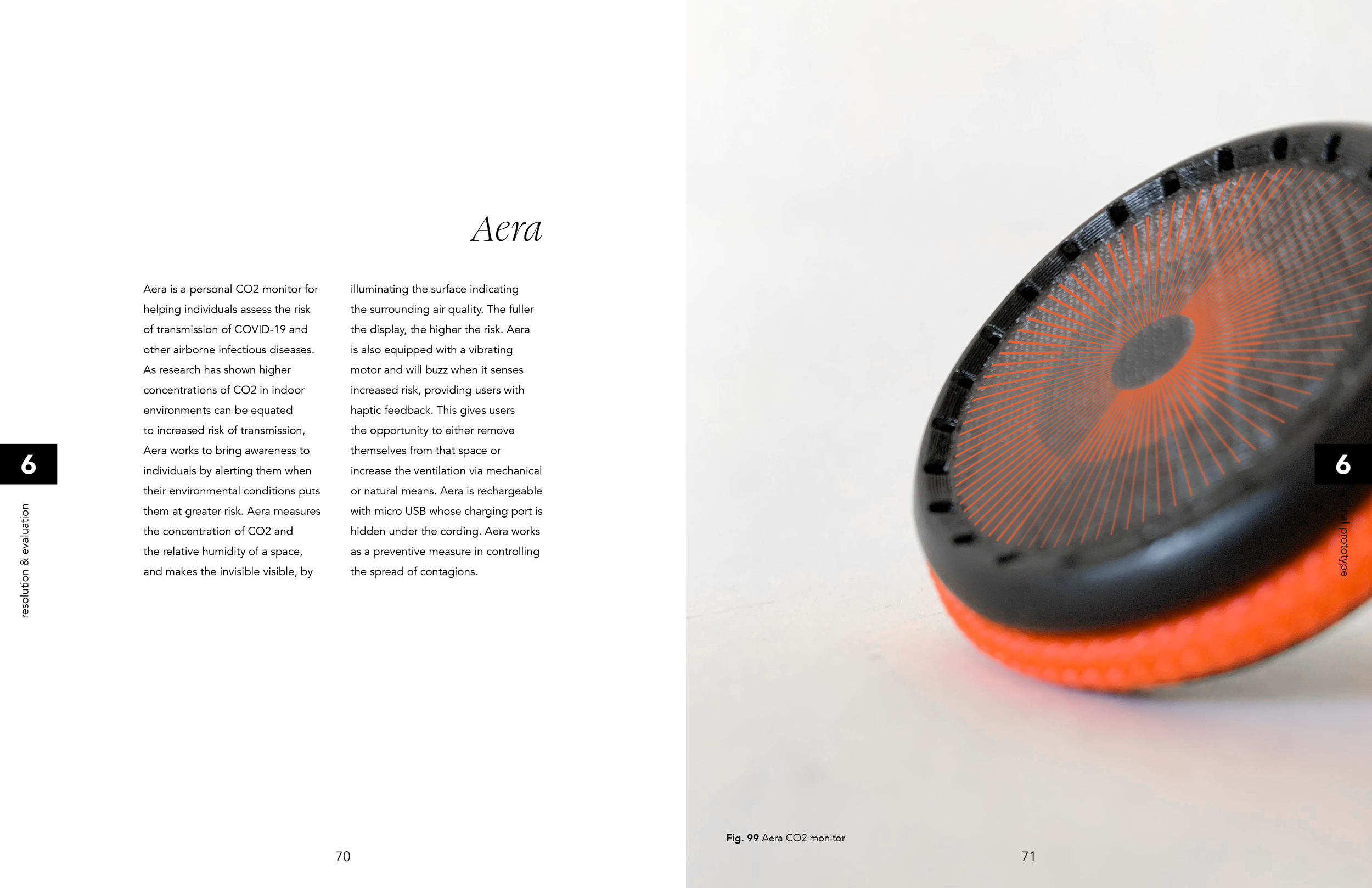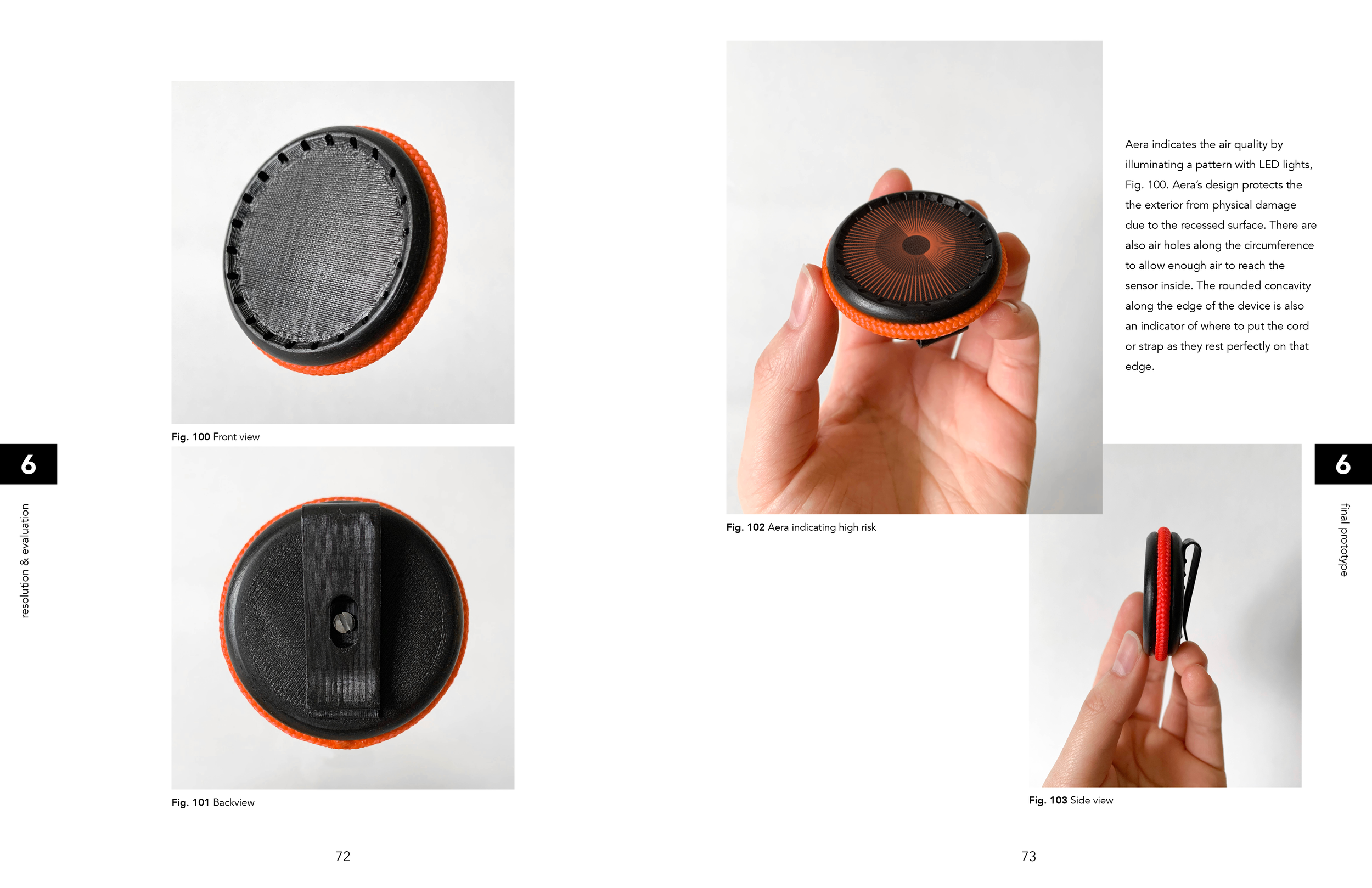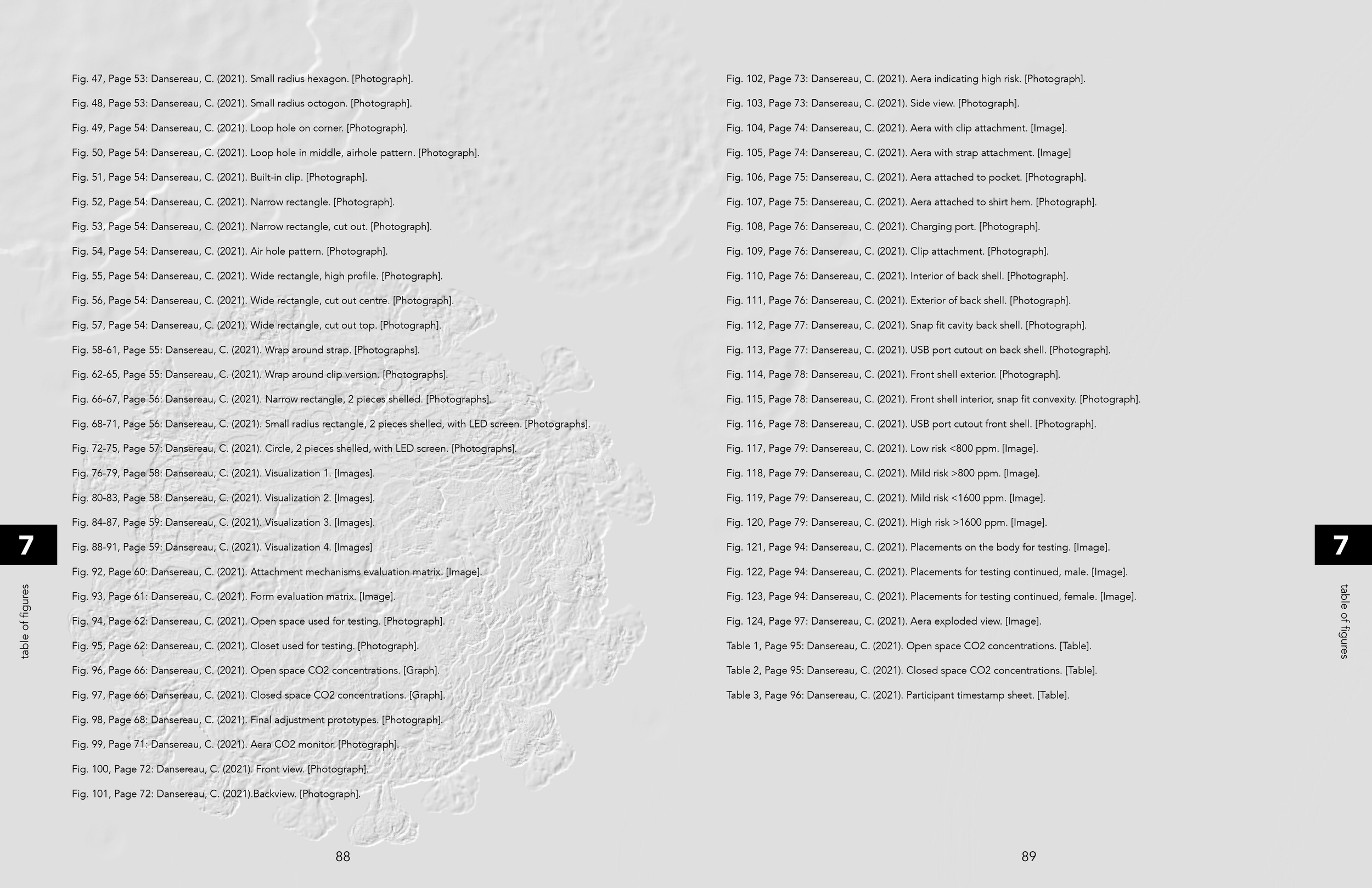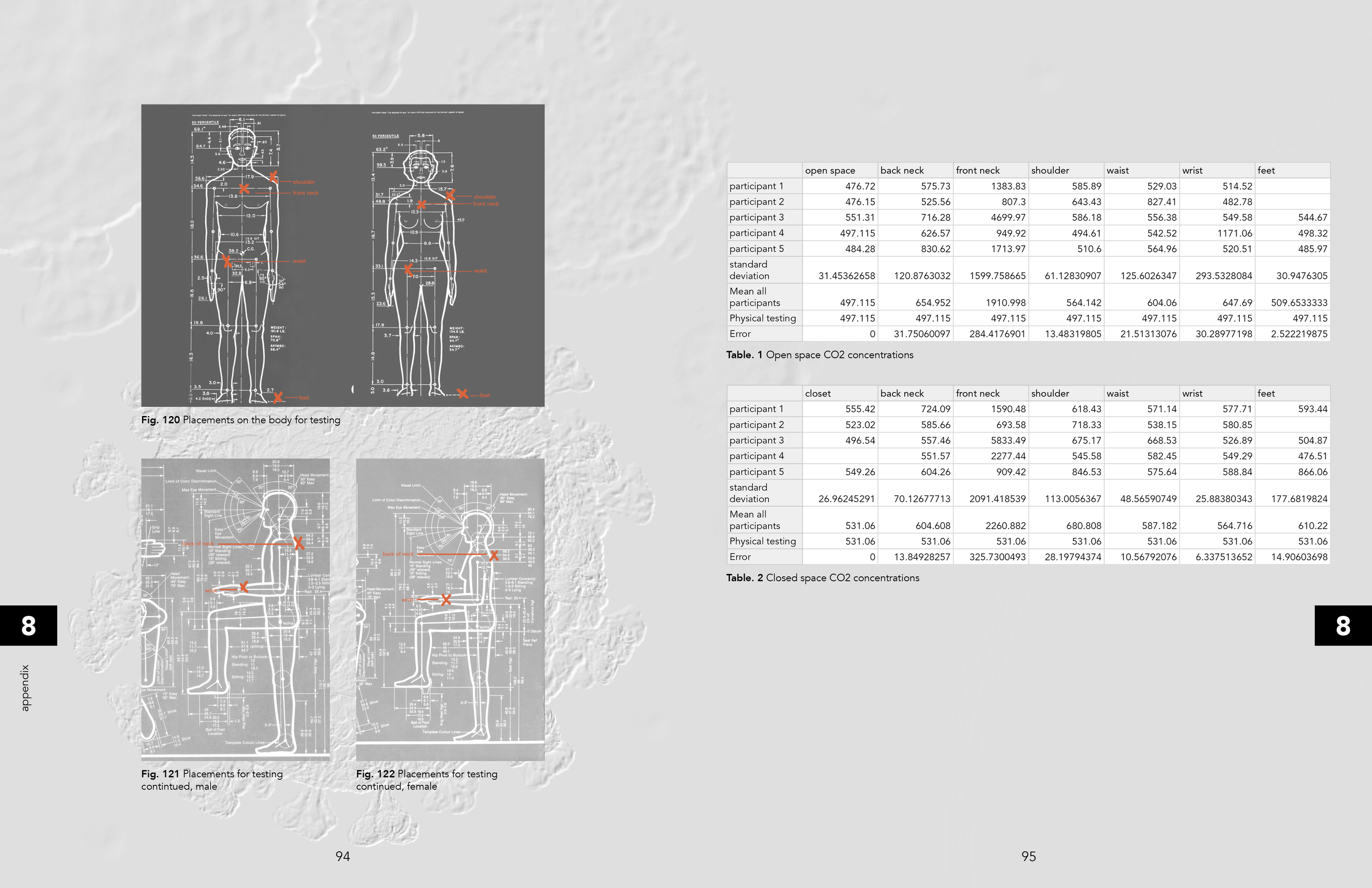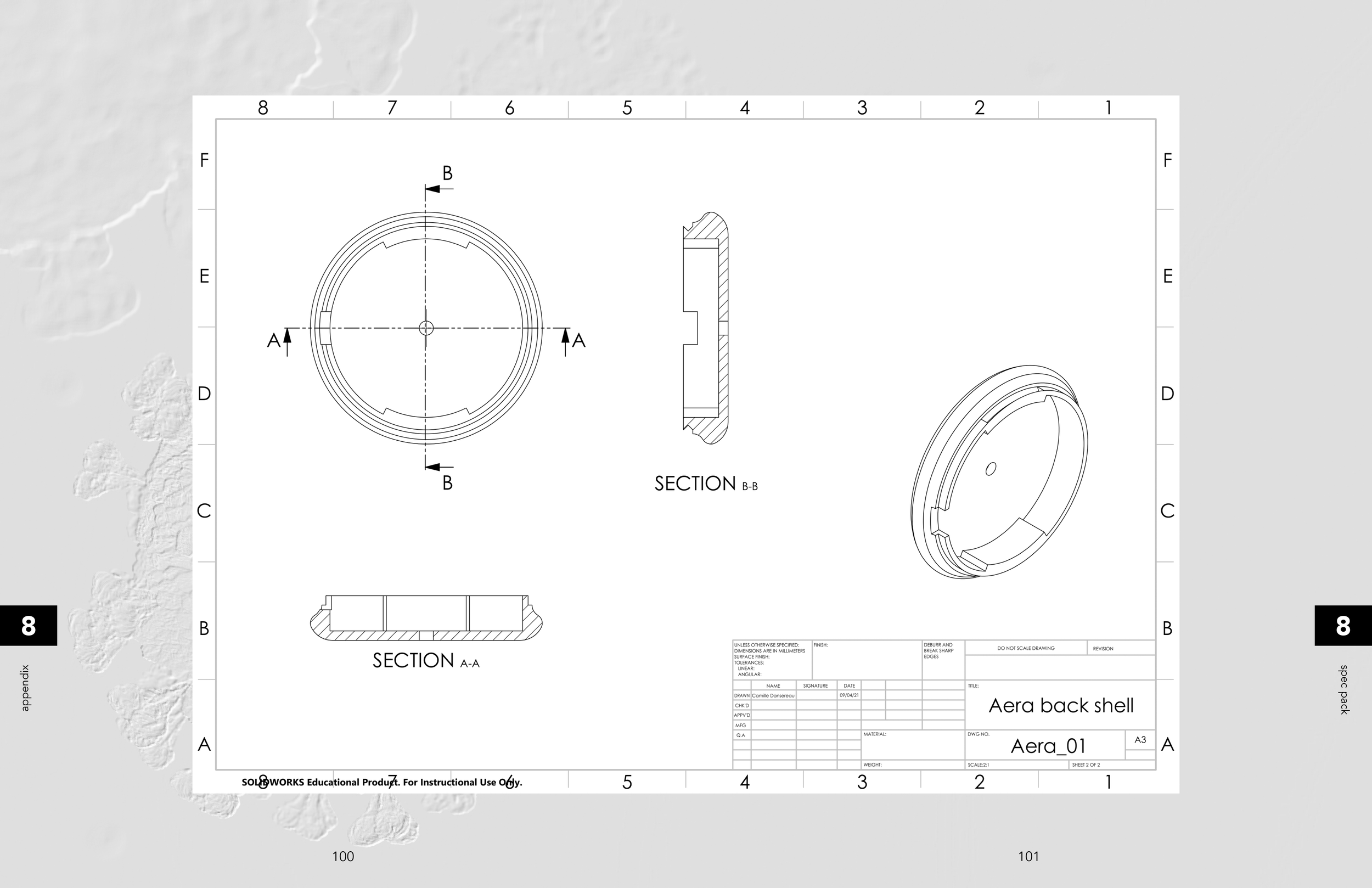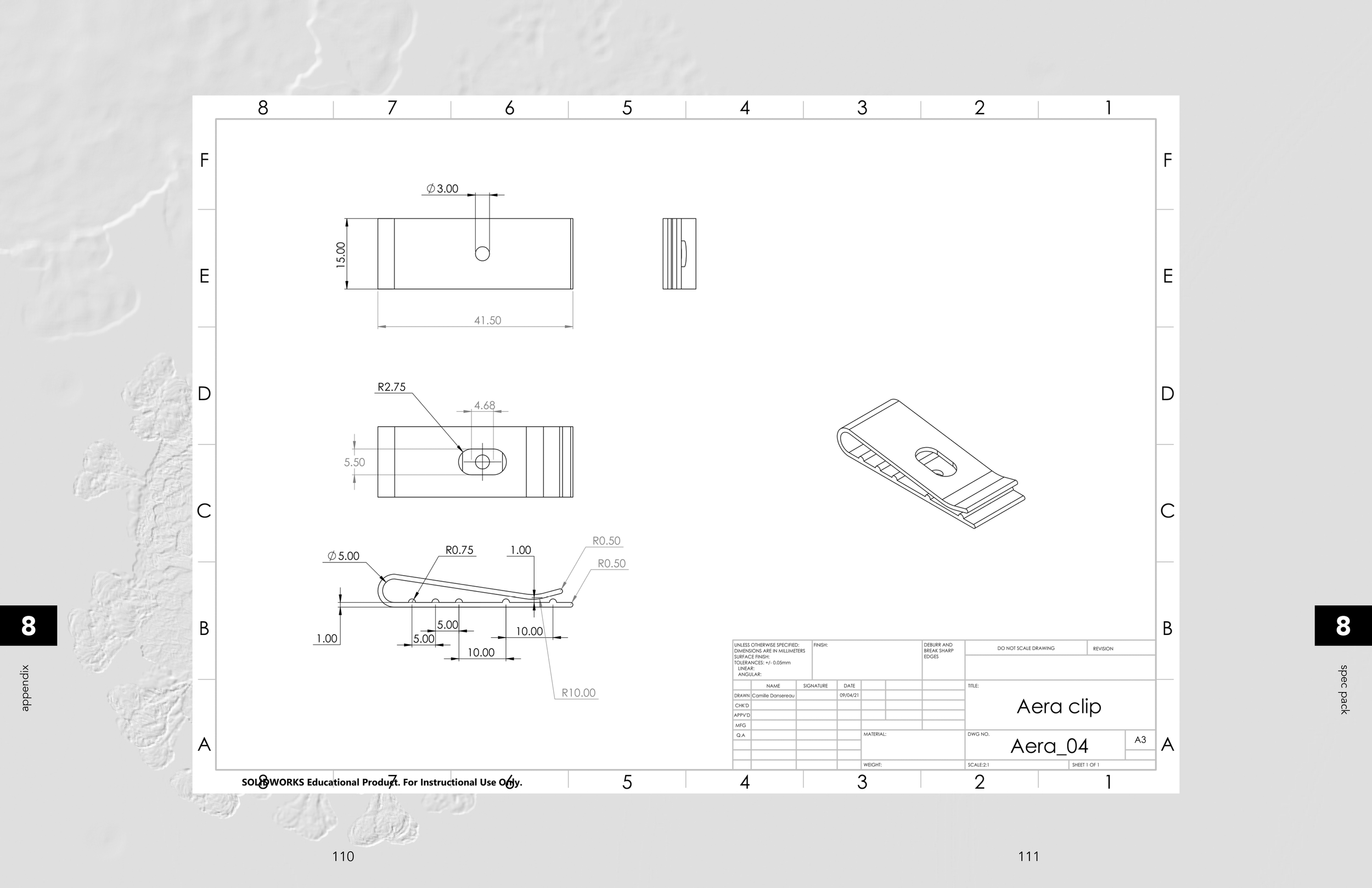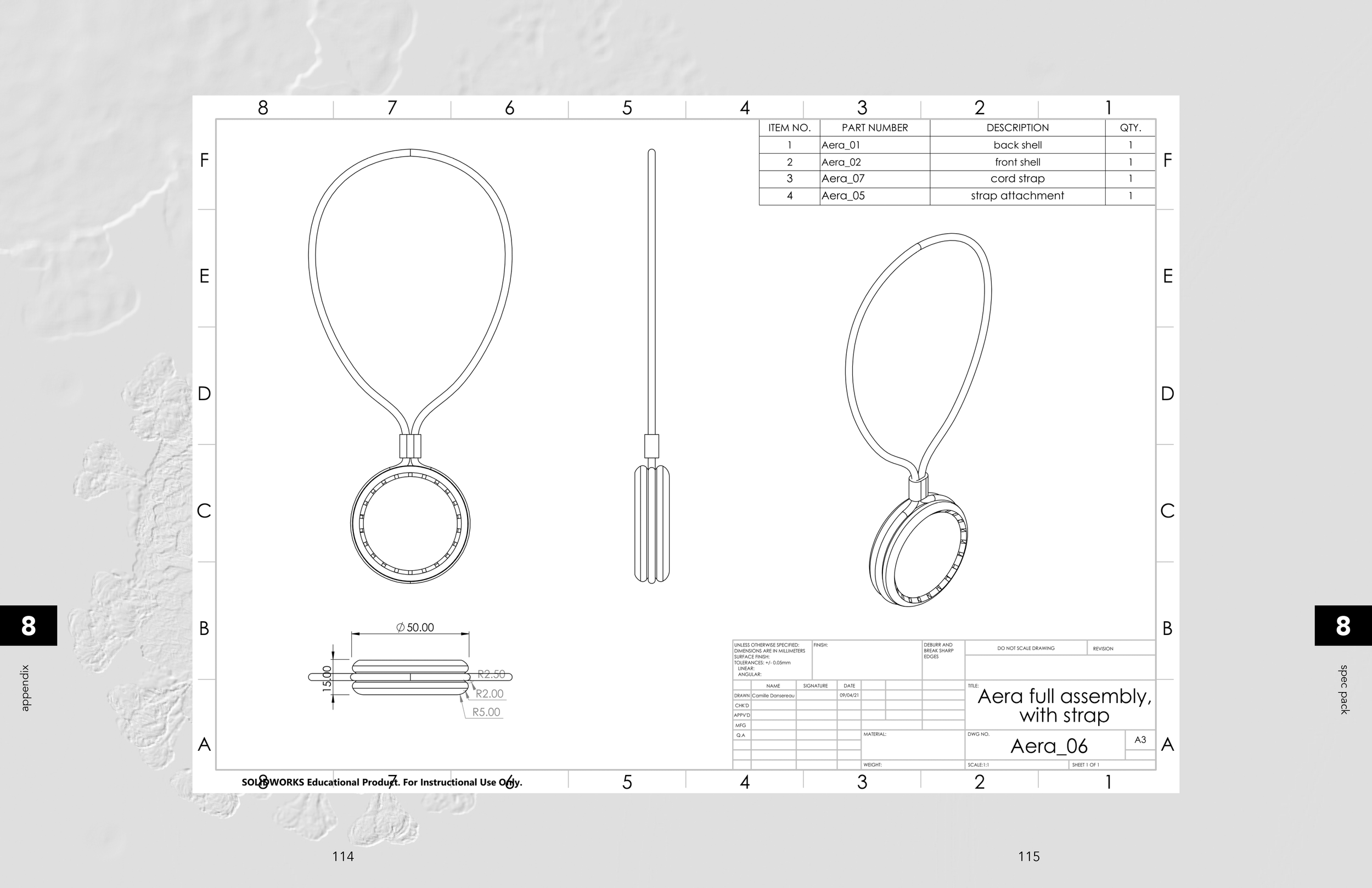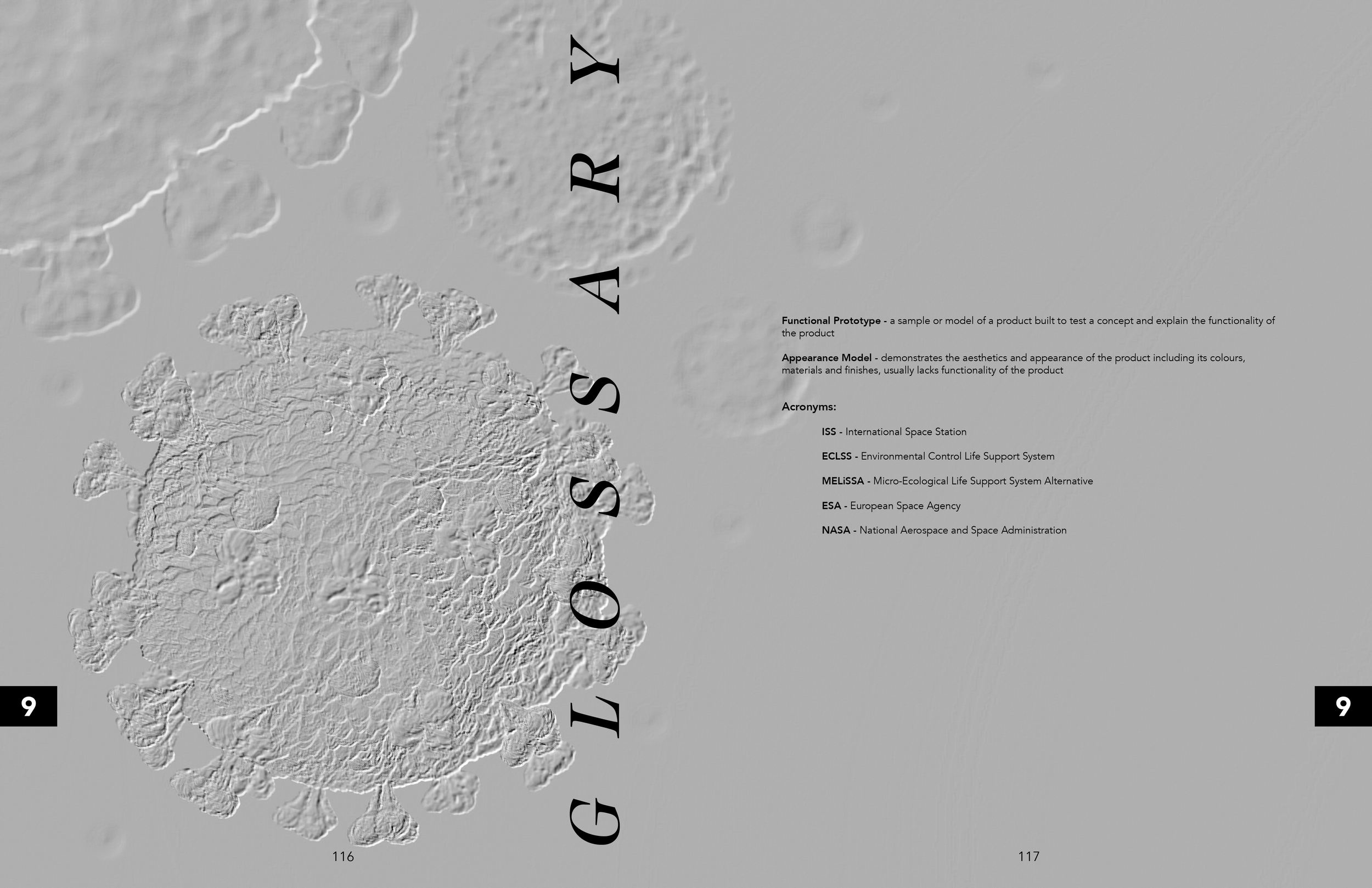
AERA
Thesis project
Wearable CO2 monitor for assessing the transmission risk of COVID-19.
Design for a pandemic.
the challenge.
In light of the COVID-19 pandemic, the importance of air quality and proper ventilation have been highlighted as instrumental in minimizing the spread of the virus. Poor ventilation can indicate a lack of fresh clean air replacing contaminated air, and indoor environments are more commonly found to facilitate the transmission of airborne infectious diseases than outdoor environments. With the whole world spending more time indoors due to the pandemic, the need for better systems to help improve air quality is ever present. Research found that poor ventilation results in a higher transmission risk, and CO2 can be used as a proxy to indicate poor ventilation. Bacteria and viruses are co-exhaled with CO2, therefore higher concentrations of CO2 can indicate a higher transmission risk.
the Solution.
The result of this thesis project is Aera, a personal CO2 monitor for helping individuals assess the risk of transmission of COVID-19 and other airborne infectious diseases. Aera measures the concentration of CO2 in a space, and makes the invisible visible by illuminating a display indicating the air quality. The fuller the display, the higher the risk. Aera is also equipped with a vibrating motor and will buzz when it senses increased risk, providing users with haptic feedback. This gives users the opportunity to either remove themselves from that space or increase the ventilation via mechanical or natural means. Aera works as a preventive measure in controlling the spread of contagions. Its purpose is to inform and educate users on their surrounding air quality in relation to the transmission risk of infection.
